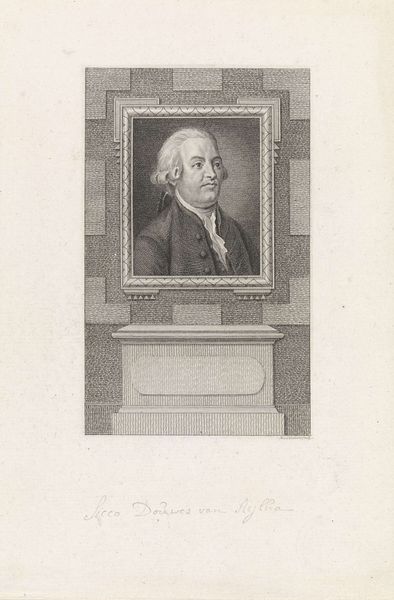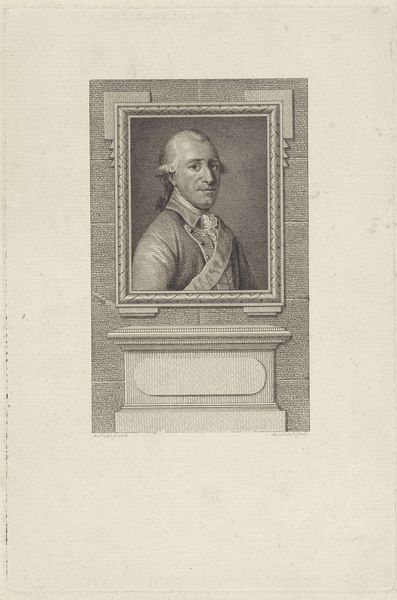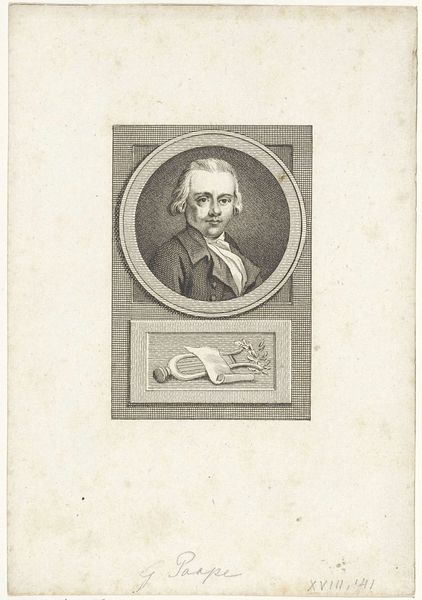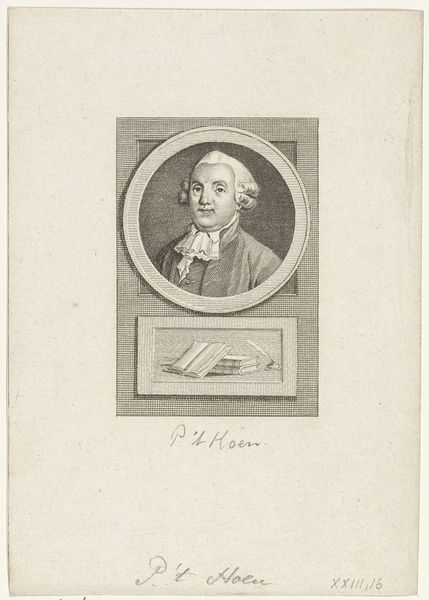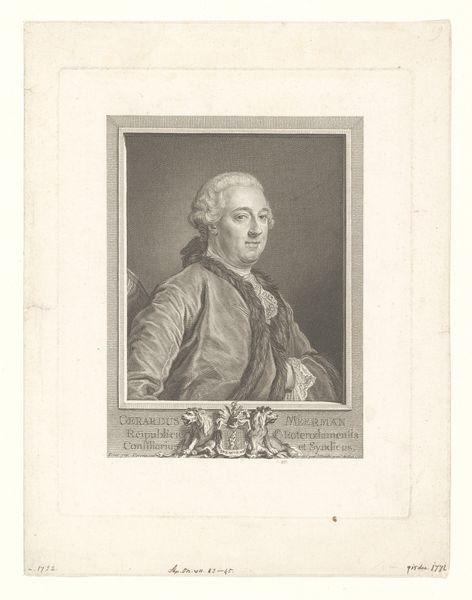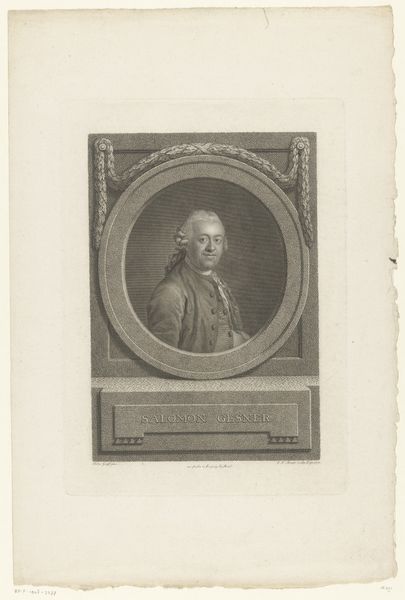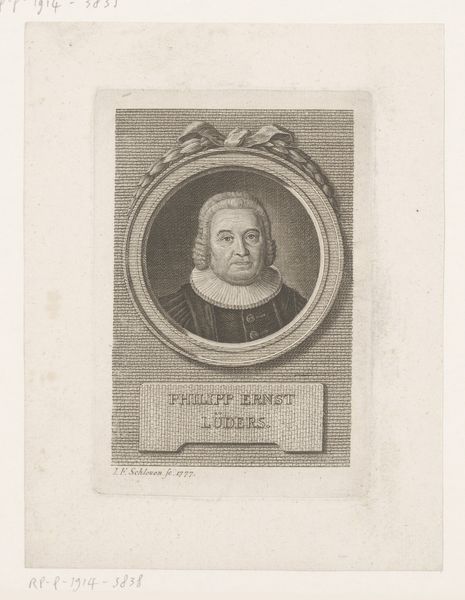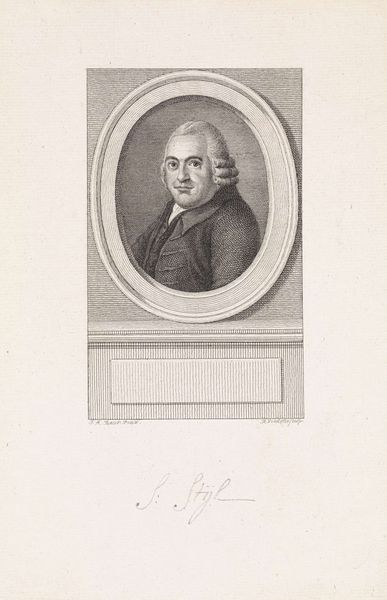
drawing, print, paper, engraving
#
portrait
#
drawing
#
neoclacissism
# print
#
paper
#
genre-painting
#
engraving
Dimensions: height 165 mm, width 113 mm
Copyright: Rijks Museum: Open Domain
Curator: This is Reinier Vinkeles’ engraving, “Portret van Pieter Lyonet,” likely completed between 1783 and 1795. It’s currently held at the Rijksmuseum. Editor: It has such a strong, balanced feel. The crisp lines create this sense of formality, yet there's something undeniably intimate in the subject's gaze. Curator: Absolutely. Lyonet, as the subject, lived a life straddling the scientific and political worlds of the 18th century. The composition itself, placing him in a neoclassical frame, speaks to the era’s preoccupation with order and reason, hallmarks of power in enlightenment Europe. Editor: Yes, the circular frame containing Lyonet contrasts so interestingly with the rectangular frame just below, which displays some of his tools – a book, maybe a quill. The shapes create a visual echo. What is he holding? Is that a worm? Curator: Precisely. Lyonet was a highly respected naturalist, known especially for his detailed work on insects. That is most likely his most impactful discovery on display. By placing these symbols of his scientific achievements beneath his portrait, the artist, Vinkeles, alludes to his intellectual legacy as much as his personal identity. What does that small emblem mean to you? Editor: To me, the presence of those tools of observation, in direct juxtaposition to Lyonet's person, conveys a strong belief that intellect, observation, and study are inherent aspects of human achievement, inextricably connected to the portrayed individual. It lends this portrait an additional layer of nuance and depth. The subject is, indeed, defined as much by the sum total of their work as their lived reality. Curator: This image really highlights the dialogue between the personal and the political during that period. Portraits served not only to capture likenesses but also to solidify social roles and intellectual positions. Lyonet’s involvement in shaping Genevan politics while immersed in scientific investigation places him as a transitional figure in an era of rapid changes to what we would think of today as intersectional thought. Editor: Looking at this work, one senses how the past continues to inform our present. Visual communication echoes through centuries. Thank you, Vinkeles, for recording so well. Curator: Yes, there is a profound weight to seeing how these lines help transmit knowledge to contemporary times. It’s the work of an artist but also of a recorder.
Comments
No comments
Be the first to comment and join the conversation on the ultimate creative platform.
